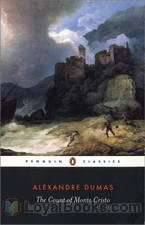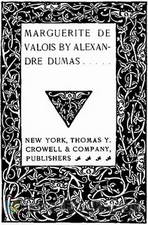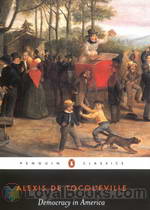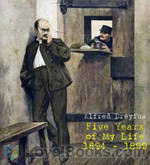|
Books Should Be Free Loyal Books Free Public Domain Audiobooks & eBook Downloads |
|
|
Books Should Be Free Loyal Books Free Public Domain Audiobooks & eBook Downloads |
|
Top Authors |
|---|
|
Book type:
Sort by:
|
By: Alexander Wilmot (1836-1924) | |
|---|---|
 Poetry of South Africa
Poetry of South Africa
Alexander Wilmot was a Cape Town politician and Fellow of the Royal Geographical Society. He is the author of the History of the Zulu War 1879. Here he collects poetry from various sources in the Cape Colony, Natal, and the Transvaal. Summary by Larry Wilson. | |
By: Alexandre Corréard (1788-1857) | |
|---|---|
 Narrative of a Voyage to Senegal in 1816 Undertaken by Order of the French Government
Narrative of a Voyage to Senegal in 1816 Undertaken by Order of the French Government
| |
By: Alexandre Dumas (1802-1870) | |
|---|---|
 The Count of Monte Cristo
The Count of Monte Cristo
Written by French author Alexandre Dumas, The Count of Monte Cristo follows the life of Edmond Dantes as he embarks on a journey of revenge after being wrongly imprisoned and set up by none other than his so-called friends. Set during the years after the fall of Napoleon’s empire, the story unwinds in several locations including Paris, Marseilles, Rome, Monte Cristo and Constantinople. A handsome young sailor and soon to be ship captain Edmond Dantes seems to have it all in life, as he returns to Marseilles to wed the love of his life and fiancée, the beautiful Mercedes... | |
 The Three Musketeers
The Three Musketeers
The Three Musketeers follows the adventures of the young Gascon nobleman, D’Artagnan and his three trusted friends who served as musketeers in the king’s regiment – Athos, Porthos & Aramis. Written by Alexandre Dumas, the book was a bestseller during the time of its publication and it remains so even today. It follows the timeless theme of friendship and bravery. The main protagonist of the story is D’Artagnan who travels to Paris to realize his dreams of becoming one of the musketeers for the king... | |
 The Man in the Iron Mask
The Man in the Iron Mask
The Man in the Iron Mask by Alexandre Dumas is part of the novel The Vicomte of Bragelonne: Ten Years After, published in serial form between 1857-50. It is also the last of the D'Artagnan stories written by Dumas and the three musketeers are the real heroes of the story, though the title is given to the man in the iron mask. The story opens with Aramis (one of the musketeers who is now a priest) taking the last confession of a prisoner who is condemned to be executed soon. His confession comes as a thunderbolt to the former musketeer... | |
 Twenty Years After
Twenty Years After
First serialized from January to August, 1845, Twenty Years After is the second book in The D’Artagnan Romances, and follows the gallant adventures of the musketeers, as they are once again summoned to alleviate the various threats that lurk in the political scene of France, as the country is threatened by a possible uprising. Enriched with exciting and well-developed characters, the novel adds more detail to its familiar characters, as the musketeers have matured and are portrayed in a more introspective light... | |
 Celebrated Crimes
Celebrated Crimes
Dumas's 'Celebrated Crimes' was not written for children. The novelist has spared no language -- has minced no words -- to describe the violent scenes of a violent time.In some instances facts appear distorted out of their true perspective, and in others the author makes unwarranted charges. The careful, mature reader, for whom the books are intended, will recognize, and allow for, this fact.The first volume comprises the annals of the Borgias and the Cenci. The name of the noted and notorious Florentine family has become a synonym for intrigue and violence, and yet the Borgias have not been without stanch defenders in history... | |
 The Vicomte De Bragelonne
The Vicomte De Bragelonne
After The Three Muskateers and Twenty Years After the adventurous story of Athos, Porthos, Aramis and D'Artagnan continues!The Vicomte of Bragelonne: Ten Years Later (French: Le Vicomte de Bragelonne ou Dix ans plus tard) is the last of the Musketeer novels. It is usually divided into four volumes and this first volume contains chapters 1-75. | |
 The Black Tulip
The Black Tulip
The Black Tulip, written by Alexandre Dumas père and published in 1850, is a historical novel placed in the time of Tulipmania in the Netherlands. The novel begins with the 1672 politically motivated mob lynching of the de Witt brothers and then follows the story of Cornelius van Baerle, godson of Cornelius de Wit. Cornelius Van Baerle has joined the race to breed a truly black tulip – and to win the prize of 100,000 guilders, as well as fame and honour. As he nears his goal he is jailed and then of course rescued – by the beautiful Rosa, daughter of the jailer. | |
 Louise de la Valliere
Louise de la Valliere
After The Three Muskateers and Twenty Years After the adventurous story of Athos, Porthos, Aramis and D'Artagnan continues! The Vicomte of Bragelonne: Ten Years Later (French: Le Vicomte de Bragelonne ou Dix ans plus tard) is the last of the Musketeer novels. It is usually divided into four volumes and this third volume contains chapters 141-208. | |
 Ten Years Later
Ten Years Later
After The Three Muskateers and Twenty Years After the adventurous story of Athos, Porthos, Aramis and D'Artagnan continues!The Vicomte of Bragelonne: Ten Years Later (French: Le Vicomte de Bragelonne ou Dix ans plus tard) is the last of the Musketeer novels. It is usually divided into four volumes and this second volume contains chapters 76-140. | |
 The Forty-Five Guardsmen
The Forty-Five Guardsmen
| |
 The Companions of Jehu
The Companions of Jehu
| |
 Marguerite de Valois
Marguerite de Valois
A historical fiction novel set in Paris (1572) during Charles IX's reign and the French Wars of Religion. Marguerite de Valois, daughter of deceased Henry II, is the novel's protagonist set against the infamous schemes of the Catholic power player, Catherine de Medici. | |
 Chicot the Jester
Chicot the Jester
This sequel to Dumas' “Marguerite de Valois” begins four years after the sudden death of King Charles IX and succession of his brother Henry III. The reign of King Henry III was plagued with rebellion and political intrigue due to the War of the Three Henries, where his regency was challenged by King Henry of Navarre (leader of the Huguenots) and Henry I, Duke of Guise (leader of the Catholic League). Dumas weaves two main storylines through this turbulent backdrop: one of the love ignited between le Comte de Bussy and la Dame de Monsoreau, and another of the friendship between King Henry III and his truly unique jester, Chicot (Jean-Antoine d'Anglerais). | |
 The Conspirators The Chevalier d'Harmental
The Conspirators The Chevalier d'Harmental
| |
 The Prussian Terror
The Prussian Terror
| |
 The Regent's Daughter
The Regent's Daughter
| |
 The Son of Clemenceau
The Son of Clemenceau
| |
 Man in the Iron Mask (an Essay)
Man in the Iron Mask (an Essay)
| |
 Celebrated Crimes, Vol. 7: Part 2: Countess de Saint-Geran
Celebrated Crimes, Vol. 7: Part 2: Countess de Saint-Geran
This story details the crimes and trial surrounding the unexpected pregnancy and subsequent childbirth of the Countess de Saint-Geran in 1640s France. Familial jealousies harbored by her sister-in-law, the Marchioness de Bouille, intertwine with the greedy schemes of a fugitive relative, the Marquis de Saint-Maixent, to produce a scandalous series of events. - Summary by jvanstan | |
 Celebrated Crimes, Vol. 7: Part 3: Murat
Celebrated Crimes, Vol. 7: Part 3: Murat
Amidst the political winds from Napoleon’s downfall, this tale turns our attention to the flight of a former French marshal and King of Naples, Joachim Murat. Murat, unhappy with the deal he made to obtain pardon from the Austrian Emperor, takes a life-ending resolution to retake his crown rather than live in peaceful obscurity. - Summary by jvanstan | |
 Celebrated Crimes, Vol. 8: Part 1: The Marquise de Brinvilliers
Celebrated Crimes, Vol. 8: Part 1: The Marquise de Brinvilliers
The crimes of the Marquise of Brinvilliers, a French aristocrat during the reign of Louis XIV, included some of the most famous murders, scandals and mysteries in French history. This story recounts her major crimes, torture, conviction and execution. - Summary by jvanstan | |
 Three Musketeers, Version 2
Three Musketeers, Version 2
D’Artagnan, son of a poor Gascon aristocrat, travels to Paris to seek his fortune. His family connections enable him to obtain a position in a Guard regiment. His provincial ingenuousness and his hot-headed sense of honor earn him three duels in as many hours. Thankfully, his preparation with the sword is sufficient to recommend himself to his Musketeer antagonists, and they – Athos, Porthos, and Aramis – become his fast friends. But fate also crosses D’Artagnan’s path with some dangerous people who become his opponents: a mysterious “man from Meung” and a woman who styles herself Milady, who has formidable seduction skills and a heart that is mean and violent... | |
 Celebrated Crimes, Vol. 8: Part 2: Vaninka
Celebrated Crimes, Vol. 8: Part 2: Vaninka
The story of Vaninka, generally regarded as the most fictionalized of Dumas’ Celebrated Crimes series, occurs during the short and eccentric rule of Emperor Paul I of Russia. Vaninka is a general’s daughter whose love for one of her father’s officers leads to tragic death, savage crimes and perversions of justice. - Summary by jvanstan | |
 Celebrated Crimes, Vol. 8: Part 3: The Marquise de Ganges
Celebrated Crimes, Vol. 8: Part 3: The Marquise de Ganges
The assassination of Diane de Joannis de Chateaublanc is a fitting tale to conclude Dumas’ celebrated crimes series. This event was as gruesome as it was brazen and, before the final dagger strokes, both the assassins and the assassinated had become embroiled in high-profile intrigues. As a result, it sent reverberations through common and court societies across Europe for decades. - Summary by jvanstan | |
 d'Artagnan Romances, Vol 1: The Three Musketeers (version 3)
d'Artagnan Romances, Vol 1: The Three Musketeers (version 3)
The d'Artagnan Romances are six volumes that intertwine exciting events from 17th-century Europe and the life of the most adored French musketeer of that period, Charles de Batz-Castelmore d'Artagnan. Volume 1 introduces d’Artagnan as a young man, seeking to earn the glory of serving in the King’s Musketeers. While in pursuit of this aim, d’Artagnan befriends three musketeers – Athos, Porthos, and Aramis – who aid him in adventures against their King’s adversary, the cunning Cardinal Richelieu. "One for all, and all for one!" - Summary by jvanstan | |
 d'Artagnan Romances, Vol 2: Twenty Years After (version 2)
d'Artagnan Romances, Vol 2: Twenty Years After (version 2)
Volume 2 of The d'Artagnan Romances begins twenty years after "The Three Musketeers." Since then, d'Artagnan's career has stagnated, he’s lost touch with his friends, and the high favor earned with Queen Anne has been forgotten. His misfortune mirrors that of France, now ruled by an ineffective miser, Cardinal Mazarin, who’s avarice fuels a rebellion. Moreover, England is mired in civil war! Can d’Artagnan do the seemingly impossible: reunite “The Inseparables,” save the Queen and young... | |
 d'Artagnan Romances, Vol 3, Part 1: The Vicomte de Bragelonne: Ten Years Later
d'Artagnan Romances, Vol 3, Part 1: The Vicomte de Bragelonne: Ten Years Later
Volume 3 of The d'Artagnan Romances is divided into three parts. The first begins in 1660, ten years after Volume 2, with d’Artagnan as Lieutenant of the King’s Musketeers. In this post, he is very near to achieving his dream and even nearer to his King, being young Louis XIV’s personal guard. Seeing first-hand how powerless the child King was, d’Artagnan resigns his illustrious, but dull, post to turn his sharp wit and sword toward another ambitious aim: restoration of the English monarchy... | |
 Taking the Bastile
Taking the Bastile
Pitou lost his mother when he was small. He was raised by a stern aunt who did not really love him. He starts knowing the world by going to service. How can this man, Pitou the Peasant go on to influence the whole state? How can he go on and take a part in the French revolution? Can his motivation, coming from what he did not have, be enough? - Summary by Stav Nisser | |
 Marie Antoinette Romances, Vol 5: The Countess of Charny
Marie Antoinette Romances, Vol 5: The Countess of Charny
This 5th volume of the Marie Antoinette Romances begins after the fall of the Bastille and the March on Versailles, which forced Louis XVI and his court to be escorted back to Paris. In Paris, political factions battle over the fate of the nation, the royal family, and anyone with royalist sympathies. Our heroes and our anti-heroes must navigate the blood-streaked landscape while keeping their necks out of the guillotine. All the while, the prophetic Balsamo urges on the revolution: "the quantity of blood which must be shed before the sun rises on the free world ... | |
 d'Artagnan Romances, Vol 3, Part 3: The Man in the Iron Mask (version 2)
d'Artagnan Romances, Vol 3, Part 3: The Man in the Iron Mask (version 2)
Volume 3 of The d'Artagnan Romances is divided into three parts. In this, the final part, d’Artagnan’s fortune is near its height; having become the illustrious Captain of the Musketeers, he is now the chief defender of King Louis XIV. Fortune has also smiled on his three companions: Aramis is a wealthy bishop and the powerful, secret Superior General of the Jesuit Order ; Athos is the premier nobleman of France; and Porthos becomes a Duke with the proud but garishly long-winded title of “du Vallon de Bracieux de Pierrefonds... | |
 Marie Antoinette Romances, Vol 1: Balsamo, The Magician
Marie Antoinette Romances, Vol 1: Balsamo, The Magician
This is the first volume of Dumas' Marie Antoinette Romances . This historical fiction chronicles the strange events surrounding the fall of the French monarchy and rise of revolutionaries so terrifying that the period is still called "The Reign of Terrors" . In this volume, a renowned magician, Count Alessandro di Cagliostro , employs various occult tactics, like hypnotism and necromancy, to gain state secrets. Balsamo claims to be plotting against the Bourbons, but one must wonder whether this 3000 year old sorcerer has an ulterior motive... - Summary by jvanstan | |
 Marie Antoinette Romances, Vol 2: The Mesmerist's Victim
Marie Antoinette Romances, Vol 2: The Mesmerist's Victim
This 2nd volume of the Marie Antoinette Romances continues the intrigues of "Balsamo, The Magician" and adds to them the schemes of philosophers and the stirrings of revolution. Balsamo carries on his occult tactics to weaponize the state secrets that he gained in the previous volume. A serious romance and illness takes root in the court of King Louis XV, convincing one of the leading philosophic minds of the era, Jean-Jacques Rousseau, that “the breath of heaven will blast an age and a monarchy.” - Summary by jvanstan | |
 Marie Antoinette Romances, Vol 3: The Queen's Necklace (Version 2)
Marie Antoinette Romances, Vol 3: The Queen's Necklace (Version 2)
This 3rd volume of the Marie Antoinette Romances begins a decade after the close of "The Mesmerist’s Victim” and is based on a real scandal in Louis XVI’s court, commonly called “The Diamond Necklace Affair.” In this volume, the plotting of a powerful occultist, Count Cogliostro , collides with the long-festering resentments of a previous royal house, Jeanne de Valois , a growing popular movement for sociopolitical reform, and a shrinking supply of bread. It is easy to see how converging... | |
 Marie Antoinette Romances, Vol 4: Taking the Bastile
Marie Antoinette Romances, Vol 4: Taking the Bastile
This 4th volume of the Marie Antoinette Romances begins several years after the close of "The Queen’s Necklace.” It describes the events leading up to and including the storming of the Bastile. Past plots of Count Balsamo to destroy the French monarchy are resurrected by the mysterious Dr. Gilbert – a student of Balsamo’s occult arts and the Enlightenment philosopher, Jean-Jacques Rousseau. Considered by many critics to be a highlight of the Marie Antoinette Romances, Dumas tells this quintessential story of the French Revolution through the lens of the people... | |
 Celebrated Crimes, Vol. 2: The Massacres of the South
Celebrated Crimes, Vol. 2: The Massacres of the South
Dumas's 'Celebrated Crimes' was not written for children. The novelist has spared no language--has minced no words--to describe the violent scenes of a violent time.In some instances facts appear distorted out of their true perspective, and in others the author makes unwarranted charges. The careful, mature reader, for whom the books are intended, will recognize, and allow for, this fact. | |
 Celebrated Crimes, Vol. 3: Mary Stuart
Celebrated Crimes, Vol. 3: Mary Stuart
The contents of these volumes of 'Celebrated Crimes', as well as the motives which led to their inception, are unique. They are a series of stories based upon historical records, from the pen of Alexandre Dumas, pere, when he was not "the elder," nor yet the author of D'Artagnan or Monte Cristo, but was a rising young dramatist and a lion in the literary set and world of fashion.The third volume is devoted to the story of Mary Queen of Scots, another woman who suffered a violent death, and around whose name an endless controversy has waged... | |
 Forty-Five Guardsmen
Forty-Five Guardsmen
The sequel to "Chicot the Jester" and final book of the "Valois Romances." This story begins six years after the famed "Duel of the Mignons" between the favorites of the courts of King Henry III and Henry the Duke of Guise . Dumas concludes his historical fiction on the War of the Three Henries while detailing the formation of the Forty-Five Guardsmen , following Chicot the Jester as he stays loyal to the failing regency of King Henry III, and continuing the story of Diana . - Summary by jvanstan | |
 Count of Monte Cristo (version 2)
Count of Monte Cristo (version 2)
The story takes place in France, Italy, islands in the Mediterranean and the Levant during the historical events of 1815–1838 (from just before the Hundred Days through the reign of Louis-Philippe of France). The historical setting is a fundamental element of the book. It is primarily concerned with themes of justice, vengeance, mercy, and forgiveness, and is told in the style of an adventure story. | |
 Count of Monte Cristo (version 3)
Count of Monte Cristo (version 3)
Le Comte de Monte-Cristo is an adventure novel and one of the author's most popular works. He completed the work in 1844. The story takes place in France, Italy, islands in the Mediterranean and in the Levant during the historical events of 1815-1838 (from just before the Hundred Days to the reign of Louis-Philippe of France). It deals with themes of hope, justice, vengeance, mercy and forgiveness. The book is considered a literary classic today. | |
 Corsican Brothers
Corsican Brothers
Alexandre Dumas weaves the compelling story of Siamese twins who are separated physically but never in spirit. When one of the brothers is murdered, the other leaves Corsica for Paris to avenge the killing. Dumas brings this thrilling tale to life with his fascinating descriptions of Italy and France and his powerful portrayal of the undying love of brother for brother. | |
 Wolf-Leader
Wolf-Leader
Part local legend of a dark and dangerous Wolf-Leader, part childhood memories of his home near Villers-Cotterets, in Aisne, Dumas here penned a chilling supernaturlal encounter between man and the devil. Our hero, Thibault the shoemaker, is beaten on the orders of the Lord of Vez for hunting in the lord's forest. With Thibault's resentment at his treatment by the world at its height, the devil sees his chance and, in the guise of a wolf, proposes a deal which Thibault accepts; the ever available trade of one's soul for evil power... | |
 Celebrated Crimes, Vol. 4: Karl-Ludwig Sand
Celebrated Crimes, Vol. 4: Karl-Ludwig Sand
This is the fourth volume of Alexandre Dumas' studies of celebrated crimes and their perpetrators. This volume is concerned with the story of Karl Ludwig Sand, who stabbed August von Kotzebue to death in 1819. August von Kotzebue had been a prominent dramatist, a student of Musäus, whose royalist and conservative writings ultimately led to his assassination by a member of a revolutionary liberal Burschenschaft. - Summary by Carolin | |
 Celebrated Crimes, Vol. 4: Part 2: Urbain Grandier
Celebrated Crimes, Vol. 4: Part 2: Urbain Grandier
This is the dramatic story of Urbain Grandier, a catholic priest, who had a reputation to rival that of Casanova, which ultimately led to his destruction. He was accused of witchcraft after a series of accusations from nuns of a nearby convent, who claimed that Grandier has sent several demons upon them. The case is very well documented, and the original documents of the alleged pact, written in backwards Latin and signed by all participating demons, are still preserved. The case continues to inspire art and sciences, leading to assessments of the events in light of modern sociology, psychology, and legal sciences... | |
 Celebrated Crimes, Vol. 1: The Borgias and the Cenci (version 2)
Celebrated Crimes, Vol. 1: The Borgias and the Cenci (version 2)
Dumas's 'Celebrated Crimes' was not written for children. The novelist has spared no language--has minced no words--to describe the violent scenes of a violent time. In some instances facts appear distorted out of their true perspective, and in others the author makes unwarranted charges. The careful, mature reader, for whom the books are intended, will recognize, and allow for, this fact. The first volume comprises the annals of the Borgias and the Cenci. The name of the noted and notorious Florentine family has become a synonym for intrigue and violence, and yet the Borgias have not been without stanch defenders in history... | |
 Catherine Howard (Dramatic Reading)
Catherine Howard (Dramatic Reading)
Subtitled "The Throne, The Tomb, and The Scaffold - An Historical Play in 3 Acts From the Celebrated Play of that Name by Alexandre Dumas" - How can you resist a play about English history - the doomed fifth wife of Henry the 8th - by the celebrated French author of The Musketeers?? - Summary by ToddHW Cast list: Henry VIII, King of England: Larry Wilson Athelwold, Duke of Northumberland: Paul Simonin Archbishop Cranmer: alanmapstone Duke of Sussex: KHand Duke of Norfolk: tovarisch Grand Chamberlain:... | |
 Celebrated Crimes, Vol. 3: Mary Stuart (version 2)
Celebrated Crimes, Vol. 3: Mary Stuart (version 2)
The contents of these volumes of 'Celebrated Crimes', as well as the motives which led to their inception, are unique. They are a series of stories based upon historical records, from the pen of Alexandre Dumas, pere, when he was not "the elder," nor yet the author of D'Artagnan or Monte Cristo, but was a rising young dramatist and a lion in the literary set and world of fashion. The third volume is devoted to the story of Mary Queen of Scots, another woman who suffered a violent death, and around whose name an endless controversy has waged... | |
 Celebrated Crimes, Vol. 4: Karl-Ludwig Sand (version 2)
Celebrated Crimes, Vol. 4: Karl-Ludwig Sand (version 2)
This is the fourth volume of Alexandre Dumas' studies of celebrated crimes and their perpetrators. This volume is concerned with the story of Karl Ludwig Sand, who stabbed August von Kotzebue to death in 1819. August von Kotzebue had been a prominent dramatist, a student of Musäus, whose royalist and conservative writings ultimately led to his assassination by a member of a revolutionary liberal Burschenschaft. - Summary by Carolin | |
 Celebrated Crimes, Vol. 4: Part 2: Urbain Grandier (version 2)
Celebrated Crimes, Vol. 4: Part 2: Urbain Grandier (version 2)
This is the dramatic story of Urbain Grandier, a catholic priest, who had a reputation to rival that of Casanova, which ultimately led to his destruction. He was accused of witchcraft after a series of accusations from nuns of a nearby convent, who claimed that Grandier has sent several demons upon them. The case is very well documented, and the original documents of the alleged pact, written in backwards Latin and signed by all participating demons, are still preserved. The case continues to inspire art and sciences, leading to assessments of the events in light of modern sociology, psychology, and legal sciences... | |
 Paul Jones
Paul Jones
Dumas's play talks of American Naval Hero John Paul Jones's romantic entanglements and affairs of honor ashore in France. He later converted it to a novel. - Summary by ToddHW Cast list: The Marquis D'Auray: Amy Gramour The Marchioness, his wife: Sonia Count Emanuel, their child: Tomas Peter Margaret, their child: Leanne Yau Baron De Lectoure: Nemo Paul Jones: ToddHW Louis Achard: Thomas A. Copeland Mr. De La Jarry: Roger Melin Mr. De Nozay: RecordingPerson Notary: Zames Curran Laffeuille, valet to the Marchioness: Son of the Exiles Jasmin, valet to Emanuel: Eva Davis Stage Directions: Sandra Schmit Edited by: ToddHW | |
 Celebrated Crimes, Vol. 4: Part 3: Nisida
Celebrated Crimes, Vol. 4: Part 3: Nisida
This story details the many crimes surrounding a significant historical confrontation between a fisherman from the island of Nisida, named Gabriel, and the Italian Prince of Brancaleone. Dumas notes that "the details of this case are recorded in the archives of the Criminal Court at Naples." - Summary by jvanstan | |
 Celebrated Crimes, Vol. 5: Part 1: Desrues
Celebrated Crimes, Vol. 5: Part 1: Desrues
This story chronicles the crimes of Antoine-Francois Desrues from his childhood to his execution. Desrues constructed the veneer of a virtuous reputation that hid his ever-increasing deviancy from society. Eventually, his lust for fame and fortune crumbled his virtuous veneer, revealing the startling extent of his crimes, and condemning him to justice by the executioner's hand. - Summary by jvanstan | |
 Celebrated Crimes, Vol. 4: Part 3: Nisida (version 2)
Celebrated Crimes, Vol. 4: Part 3: Nisida (version 2)
Dumas, with the assistance of several friends, compiled Celebrated Crimes, an eight-volume collection of essays on famous criminals and crimes from European history. . This volume tells the story of the infamous prison on Nisida a small island near Naples. - Summary by Michele Eaton | |
 Celebrated Crimes, Vol. 5: Part 2: La Constantin
Celebrated Crimes, Vol. 5: Part 2: La Constantin
Dumas chronicles the court intrigues that led to the execution of Marie La Roux Constantin. La dame Constantin was known by French nobility in the 17th century as the “midwife to the Queen’s daughters.” This title was, in reality, a dark jest as her business was providing dangerous abortions to women ensnared in the machinations of powerful noblemen. This case also highlights how strongly gender inequalities permeated the justice system of this time as reviews by historians, like Dr. Leigh Whaley, found La Constantin was condemned “without any tangible evidence against her.” - Summary by jvanstan | |
 Mademoiselle De Belle Isle
Mademoiselle De Belle Isle
"The refined and fashionable audiences who... used to applaud the play of Mademoiselle de Belle Isle… would, in all probability, have objected to an English version of Dumas' clever play, upon the score of its immorality. It is not for me to determine whether the aristocratic audiences at the St James Theater did not understand what they heard, or whether the French language has a special charm for rendering inoffensive what plain English fails to recommend." - Summary by The Translator Cast list: The... | |
 Celebrated Crimes, Vol. 6: Part 1: Joan of Naples
Celebrated Crimes, Vol. 6: Part 1: Joan of Naples
The celebrated crimes committed during the life of Joan of Naples span from personal misdeeds to regional warfare , and ultimately unraveled her father’s legacy . Dumas projects her story through a deathly lens: beginning with the passing of King Robert the Wise, winding through the untimely demise of nobles, soldiers, and children, then ending at Joan’s own assassination. - Summary by jvanstan | |
 Celebrated Crimes, Vol. 6: Part 2: The Man in the Iron Mask, Martin Guerre
Celebrated Crimes, Vol. 6: Part 2: The Man in the Iron Mask, Martin Guerre
Dumas, with the assistance of several friends, compiled Celebrated Crimes, an eight-volume collection of essays on famous criminals and crimes from European history. Includes The Man in the Iron Mask and Martin Guerre. - Summary by Michele Eaton | |
 Celebrated Crimes, Vol. 5: Derues, La Constantin
Celebrated Crimes, Vol. 5: Derues, La Constantin
Dumas, with the assistance of several friends, compiled Celebrated Crimes, an eight-volume collection of essays on famous criminals and crimes from European history. Includes Vaninka and The Marquise De Ganges. - Summary by Michele Eaton | |
 Celebrated Crimes, Vol. 6: Part 2: The Man in the Iron Mask
Celebrated Crimes, Vol. 6: Part 2: The Man in the Iron Mask
In the late 1600s a man was doubly-imprisoned: his body in an iron cell and his face in an iron mask. Who the “man in the iron mask” was, why he was imprisoned, and how he was treated during imprisonment, remains a mystery that has captivated historians for centuries. Before Dumas penned the final volume of his D’Artagnan Romances, “The Man in the Iron Mask,” he wrote that “everything connected with the masked prisoner arouses the most vivid curiosity.” This essay is a comprehensive summary of theories regarding the masked prisoner’s identity and history from the 1770s to Dumas’ time . - Summary by jvanstan | |
 Celebrated Crimes, Vol. 6: Part 3: Martin Guerre
Celebrated Crimes, Vol. 6: Part 3: Martin Guerre
Martin Guerre was a French peasant that, during a long absence, was famously impersonated in the 16th century. Although the real Martin Guerre is suspected of no serious crimes, his imposter, Arnaud du Tilh, engaged in fraud and adultery while pursuing false claims to the Guerre inheritance. Dumas later incorporates this celebrated crime into his novel “The Two Dianas.” - Summary by jvanstan | |
 Celebrated Crimes, Vol. 7: Part 1: Ali Pacha
Celebrated Crimes, Vol. 7: Part 1: Ali Pacha
Ali Tepeleni, Pacha of Janina, rose to power during the early 1800s in one of the Ottoman Empire’s most unruly territories . His ferocious imposition of will was limitless, earning him the sobriquet of “the Lion of Janina.” As the mauling and murder of innocents sustains the lion, so did it sustain Ali Pacha’s rule. Thus, the range of celebrated crimes that Dumas describes in this essay are as vast as Ali Pacha’s ambition – an ambition rooted in his mother’s callous advice that “success justified everything, and everything is permissible to him who has the power to do it.” - Summary by jvanstan | |
By: Alexandre Dumas (fils) | |
|---|---|
 Camille
Camille
The Lady of the Camellias (French: La Dame aux camélias) is a novel by Alexandre Dumas, fils, first published in 1848, that was subsequently adapted for the stage. The Lady of the Camellias premiered at the Theatre de Vaudeville in Paris, France on February 2, 1852. An instant success, Giuseppe Verdi immediately set about to put the story to music. His work became the 1853 opera La Traviata with the female protagonist “Marguerite Gautier” renamed “Violetta Valéry”. | |
By: Alexandre Exquemelin (c. 1645-1707) | |
|---|---|
 The Pirates of Panama
The Pirates of Panama
This volume was originally written in Dutch by John Esquemeling, and first published in Amsterdam in 1678 under the title of De Americaeneche Zee Roovers. It immediately became very popular and this first hand history of the Buccaneers of America was soon translated into the principal European languages. The first English edition was printed in 1684. Esquemeling served the Buccaneers in the capacity of barber-surgeon, and was present at all their exploits. Little did he suspect that his first hand observations would some day be cherished as the only authentic and true history of the Buccaneers and Marooners of the Spanish Main... | |
By: Alexis de Tocqueville (1805-1859) | |
|---|---|
 Democracy in America
Democracy in America
Arguably, one of the most influential and insightful pieces of work concerned with American political life, Democracy in America directs itself towards American politics and society, and is considered to be one the best books written on the subject. Published in 2 volumes, in 1835 and 1840, Tocqueville records his findings after studying the thriving nation in his nine month exploratory journey. The young French aristocrat first came to America on an official assignment to study the American penal system, but instead used this as a pretext to study American society... | |
 American Institutions and Their Influence
American Institutions and Their Influence
| |
 Correspondence & Conversations of Alexis de Tocqueville with Nassau William Senior from 1834 to 1859, Volume 2
Correspondence & Conversations of Alexis de Tocqueville with Nassau William Senior from 1834 to 1859, Volume 2
| |
By: Alexis Soyer (1810-1858) | |
|---|---|
 Pantropheon
Pantropheon
Soyer was a 'celebrity chef', devising innovations such as water-cooled refrigerators and adjustable temperature ovens. He developed many popular recipes and catered for 2000 guests at Queen Victoria's coronation celebration. He had a social conscience and donated a penny for every mean sold, to help alleviate the Irish famine. During the Crimean War, he laid the foundations for the future British Army Catering Corps. He is credited with writing several books, including 'The Shilling Cookery Book for the People' and 'The Poor Man's Regenerator'. In this volume, he traces the history of food, food production, preparation and dining experiences. - Summary by Lynne Thompson | |
By: Alfonso Josephs Sheafe | |
|---|---|
 The Fascinating Boston How to Dance and How to Teach the Popular New Social Favorite
The Fascinating Boston How to Dance and How to Teach the Popular New Social Favorite
| |
By: Alfred A. (Alfred Augustus) Grace (1867-1942) | |
|---|---|
 The Tale of Timber Town
The Tale of Timber Town
| |
By: Alfred Ainger (1837-1904) | |
|---|---|
 English Men of Letters: Crabbe
English Men of Letters: Crabbe
| |
By: Alfred Arthur Reade | |
|---|---|
 Study and Stimulants; Or, the Use of Intoxicants and Narcotics in Relation to Intellectual Life
Study and Stimulants; Or, the Use of Intoxicants and Narcotics in Relation to Intellectual Life
| |
 Tea and Tea Drinking
Tea and Tea Drinking
Not a complete history of tea, but a pleasant diversion concerning tea, the pleasures found in its drinking, effects, benefits, cautions, etc. Sprinkled with poetry and excerpts from historical personages and the occasional sermon. - Summary by KevinS | |
By: Alfred Austin (1835-1913) | |
|---|---|
 The Bridling of Pegasus Prose Papers on Poetry
The Bridling of Pegasus Prose Papers on Poetry
| |
 Fortunatus' Song
Fortunatus' Song
Not all of the English poets laureate have been the greatest masters of verse. Alfred Austin, who assumed this post after Alfred Lord Tennyson, was one of the less distinguished - if more prolific - late Victorian poets. In modern times, his verse has become celebrated not for its smooth earnestness, but rather for the occasional howlers it contains. A notable example is this song from his pastoral epic Fortunatus the Pessimist, the final couplet of which is a popular favourite in anthologies of bad verse. - Summary by Algy Pug | |
By: Alfred Ayres (1826-1902) | |
|---|---|
 The Verbalist
The Verbalist
Ayres arranges usage problems alphabetically and treats certain areas in greater detail as he sees fit. For example, his first entry is A-AN (articles). His second is ABILITY-CAPACITY, in which he distinguishes between the meanings. The alphabetical arrangement continues through to YOURS. (Introduction by Bill Boerst) | |
By: Alfred B. Richards | |
|---|---|
 Cromwell
Cromwell
| |
By: Alfred Bester (1913-1987) | |
|---|---|
 Push Of A Finger
Push Of A Finger
Science fiction from the 50s by one of the masters, Alfred Bester. Society has committed itself to complete stability. Nothing is allowed to upset this stability, nothing that is not planned and approved and accounted for in advance. Yes, this is hard to imagine but this has produced decades, nay, centuries of predictable prosperity and peace. Even the newspapers have very little to write about. One reporter however is curious about the "Prog" building, where pronouncements are issued every day just as Moses issued the commandments... | |
By: Alfred Biese (1856-1930) | |
|---|---|
 The Development of the Feeling for Nature in the Middle Ages and Modern Times
The Development of the Feeling for Nature in the Middle Ages and Modern Times
| |
By: Alfred Binet (1857-1911) | |
|---|---|
 The Mind and the Brain
The Mind and the Brain
Today, almost every layperson understands the concept of intelligence tests and can glibly discuss IQ scores. In fact, these have become so common in the popular imagination that magazines, websites and pop quizzes offer to assess your intelligence at the drop of a hat! In this scenario, it's interesting to recall the very first person who proposed the concept of measurable intelligence. Alfred Binet was basically a clinical psychologist whose wide-ranging interests in learning difficulties faced by school children prompted him to undertake extensive studies in human cognition, psychology, learning and behavior... | |
By: Alfred Brittain | |
|---|---|
 Roman Women
Roman Women
| |
By: Alfred Burnett (1824-1884) | |
|---|---|
 Incidents of the War: Humorous, Pathetic, and Descriptive
Incidents of the War: Humorous, Pathetic, and Descriptive
| |
By: Alfred C. Chapin | |
|---|---|
 The Future of Brooklyn
The Future of Brooklyn
| |
By: Alfred Carmichael (1874-1963) | |
|---|---|
 Indian Legends of Vancouver Island
Indian Legends of Vancouver Island
| |
By: Alfred Chaston Chapman (1869-1932) | |
|---|---|
 Brewing
Brewing
Great as is the debt of gratitude which the brewing industry owes to the labours of scientific men, it has been more than repaid by the immense services which that industry has indirectly rendered to the advancement of modern science. It may be said without exaggeration that in respect of the number of scientific investigations of the first order of importance to which it has given rise, the brewing industry stands easily preeminent among the industries of mankind, and that without the stimulus furnished... | |
By: Alfred Comyn Lyall (1835-1911) | |
|---|---|
 Studies in Literature and History
Studies in Literature and History
| |
By: Alfred Coppel (1921-2004) | |
|---|---|
 The Hills of Home
The Hills of Home
| |
 The Invader
The Invader
| |
 The Peacemaker
The Peacemaker
| |
 Turning Point
Turning Point
| |
 Turnover Point
Turnover Point
| |
By: Alfred Crowquill (1804-1872) | |
|---|---|
 The Giant Hands or, the Reward of Industry
The Giant Hands or, the Reward of Industry
| |
By: Alfred de Musset (1810-1857) | |
|---|---|
 The Confession of a Child of the Century
The Confession of a Child of the Century
In this autobiographic novel, an aging man reflects on his past. We are witness to the relationships he has along the way, his mistakes, and finally- in the most unexpected and honorable way- the sudden developement of his belief in god. | |
By: Alfred de Vigny (1797-1863) | |
|---|---|
 Cinq Mars
Cinq Mars
| |
By: Alfred Dreyfus (1859-1935) | |
|---|---|
 Five Years of My Life 1894-1899
Five Years of My Life 1894-1899
Alfred Dreyfus, a Jewish captain in the French Army was court martialed in 1894 on a trumped up charge of treason and condemned to life imprisonment on Devil’s island, a penal colony off French Guiana. His prison diary, published as Five Years of My Life in 1901 is a heroic tale of survival against daunting odds: isolation, deprivation, torture . . Alfred left behind in Paris his wife Lucie, who, forbidden to join her husband in exile, struggled to protect their two children from the rampant anti-Semitism that swirled about them, while she begged her husband to hold onto life as she tried to clear his name... | |
By: Alfred E. Johnson (1879-) | |
|---|---|
 Frank Reynolds, R.I.
Frank Reynolds, R.I.
| |
 The Hazeley Family
The Hazeley Family
| |
By: Alfred E. Pease | |
|---|---|
 The Badger A Monograph
The Badger A Monograph
| |
By: Alfred Edgar Coppard (1878-1957) | |
|---|---|
 The Best British Short Stories of 1922
The Best British Short Stories of 1922
Twenty-four short stories by famous and not-so-famous British authors. | |
By: Alfred Edward Taylor (1869-1945) | |
|---|---|
 Thomas Hobbes
Thomas Hobbes
This work is a look at the life and ideas of Thomas Hobbes, English philosopher of the seventeenth century. The most important ideas are found in his famous work Leviathan. Taylor looks at such concepts of Hobbes as the contract, naturalism, sovereignty, natural laws, church and state, absolutism, and political obligation, etc. | |